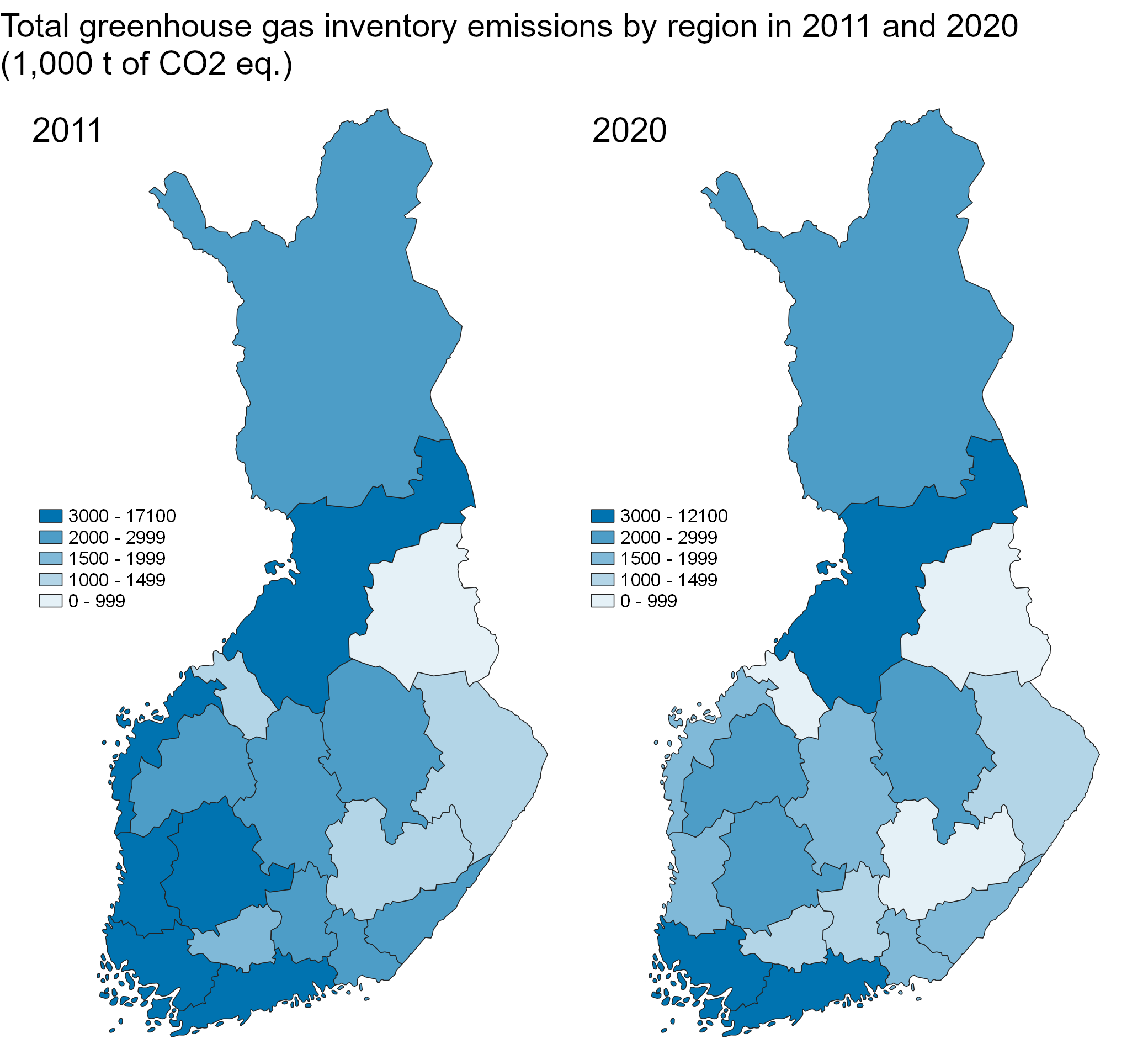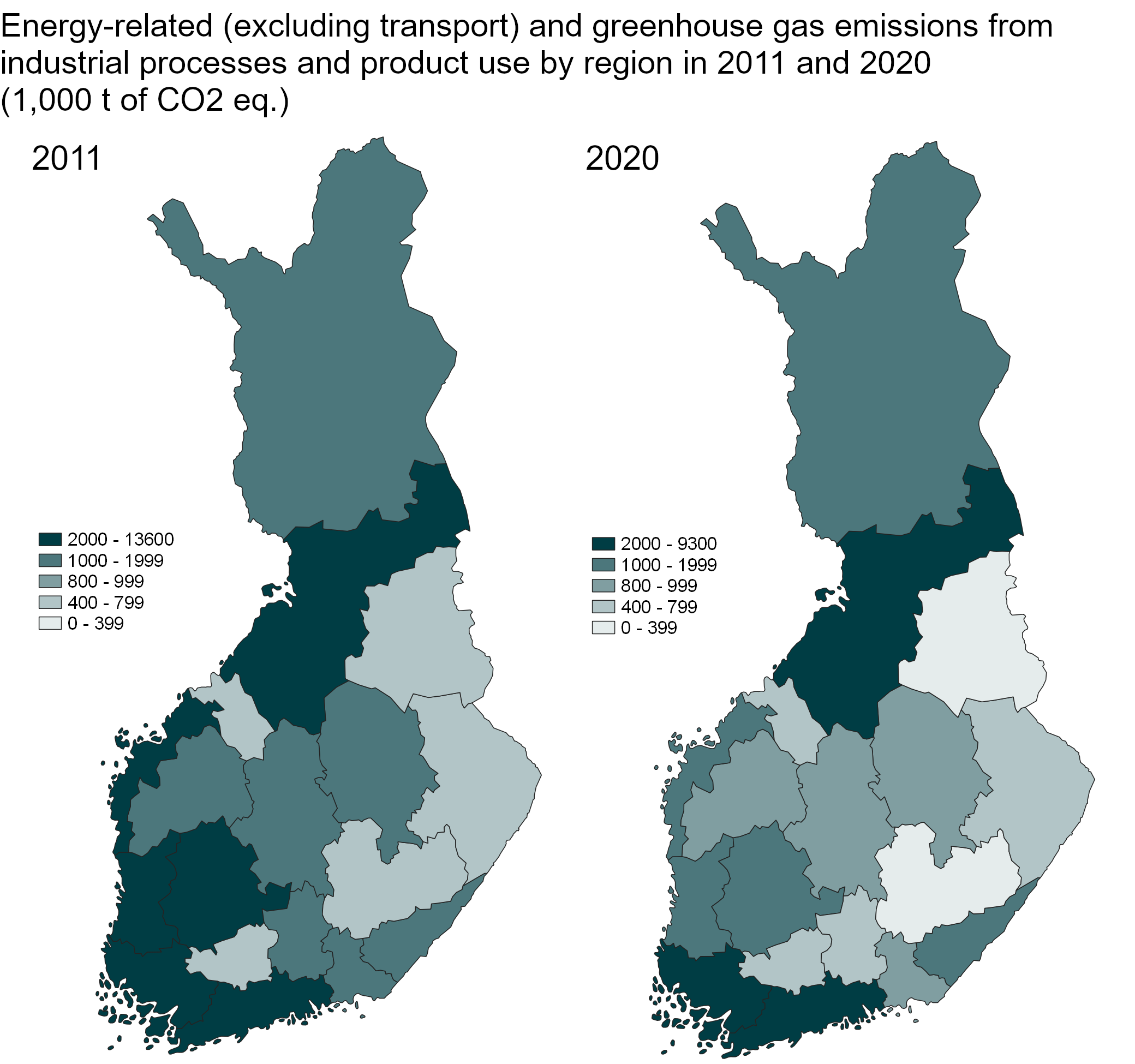Greenhouse gas emissions decreased in all regions in 2020
Release related to topics:
Environment and natureAccording to Statistics Finland, greenhouse gas emissions decreased in all regions in 2020 both compared with the previous year and 2011.
Key selections
- Total greenhouse gas emissions excluding the land use sector have decreased in all regions between 2011 and 2020.
- Emissions from the energy and waste sector have decreased in all regions during the period 2011 to 2020.
- In many regions, emissions have been reduced by the decrease in the use and decommissioning of coal-fired power plants and by replacing fossil fuels with renewable energy sources.
- Emissions have decreased in industrial processes in almost all regions. In agriculture, the emission development has differed by region, in some emissions have been rising, in some falling.
Total emissions by region
Regional total emissions without the land use sector (LULUCF) calculated in accordance with the national Greenhouse Gas Inventory have decreased in all regions between 2011 and 2020. The emission calculations have been made from the regional perspective in which emissions have been allocated to the municipalities where they were created. The assumptions and methods of the calculations are described in a separate attached document (pdf, in Finnish).
Between 2011 and 2020, emissions have declined in Uusimaa by as much as 4.9 million tonnes of CO₂ eq., in Satakunta by 2.4 million tonnes of CO₂ eq. and in North Ostrobothnia by 2.2 million tonnes of CO₂ eq. In percentages, the biggest drops were 55 per cent in Satakunta, 52 per cent in Ostrobothnia and 45 per cent in Päijät-Häme. Between 2019 and 2020, the average reduction in emissions in different regions was nine per cent.
Regional emissions by sector
Energy sector emissions without transport decreased in all regions between 2011 and 2020 and the fall has been under 10 per cent only in the regions of Lapland and Åland. In many regions, emissions have been reduced by decommissioning coal-fired power plants and reducing the use of the remaining ones, as well as replacing fossil fuels with renewable energy sources.
Emissions from transport have fallen in each region and compared to 2011, emissions in 2020 have fallen by over 20 per cent in Uusimaa and Kymenlaakso, especially due to the rise in the bio share of transport fuels. Between 2019 and 2020, the decline was 10 per cent in Uusimaa as the road traffic performance decreased in the first year of the covid-19 pandemic.
Compared to 2011, emissions from industrial processes and product use in 2020 decreased by over 10 per cent except for two regions. Emissions have remained on the same level in South Karelia and risen by 10 per cent in Southwest Finland.
According to the calculation of regional emissions based on livestock numbers and cultivated land area, total emissions from agriculture in 2020 have remained almost the same as in 2011, but the development of emissions has been divided in different directions in the regions: in about half of the regions, emissions have grown and correspondingly in half fallen. The biggest increase, 18 per cent, was seen in Kainuu, while emissions from agriculture decreased by 12 per cent in Ostrobothnia.
In the waste sector, emissions have decreased in all regions, as the average reduction between 2011 and 2020 was 32 per cent. Emissions decreased by as much as 48 per cent in Kanta-Häme and by at least 30 per cent in 11 other regions. The decrease in emissions has been affected by the decrease in landfill disposal as the number of power plants burning municipal waste has increased.


Database tables
Pick the data you need into tables, view the data as graphs, or download the data for your use.
- Emission category
- Emissions trading
Future releases
Documentation
Description of the production, used methods and quality of the statistics.
Go to documentation of the statistics